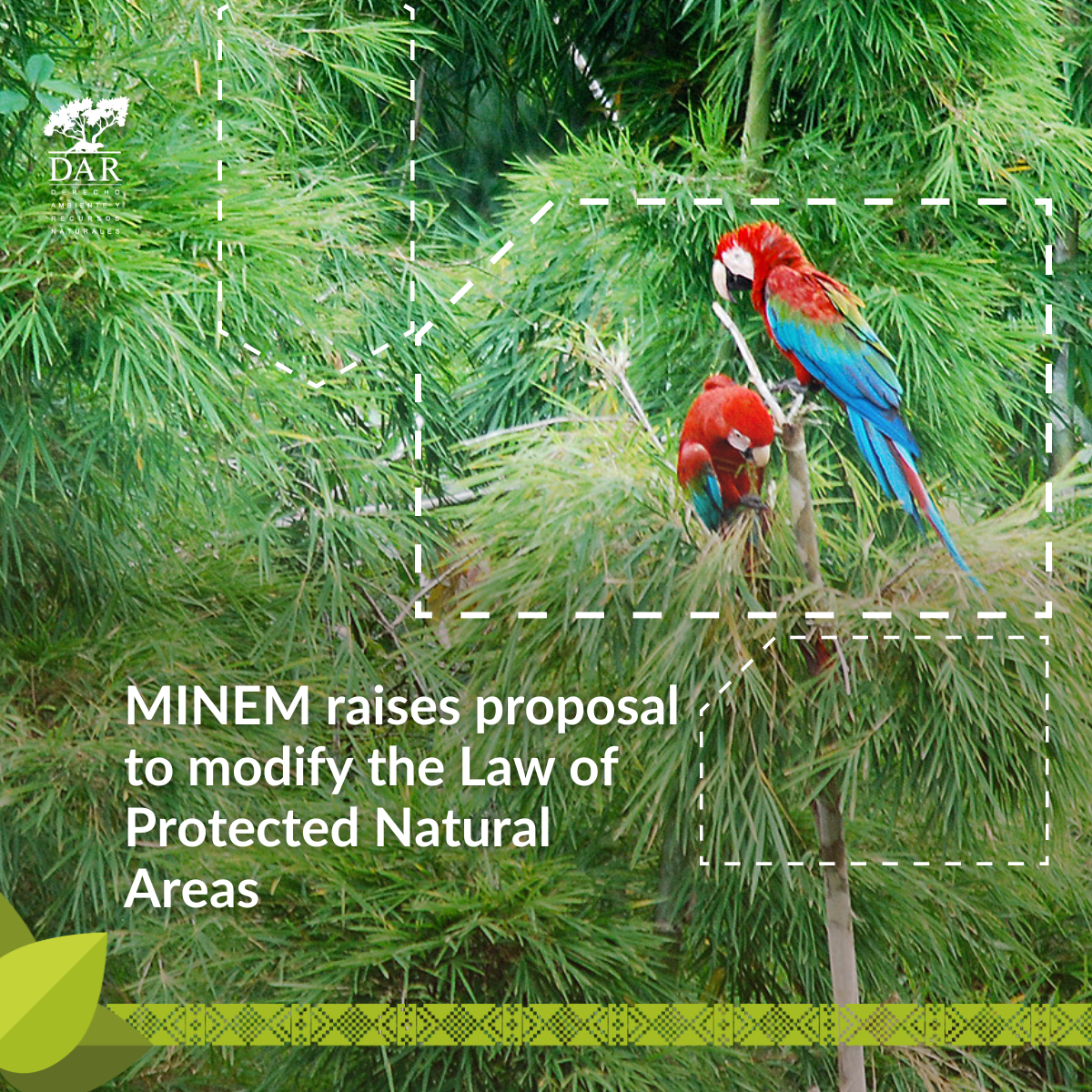The Bahuaja Sonene, the Manu and the Megantoni are part of the natural wealth reserves of Peru that have the highest levels of protection to date. This protection could be alarmingly reduced if a proposed bill sent this week by the Ministry of Energy and Mines goes through.
Lima, May 26, 2023.- On May 23, 2023, the Ministry of Energy and Mines sent to the Ministry of the Environment for its evaluation a proposed bill drafted by PERUPETRO that seeks to modify the Law on Protected Natural Areas (Official No. 0776-2023/MINEM-DGH) to promote the oil and natural gas industry.
However, this proposal generates serious concern, since it would weaken the legal framework for the protection of natural areas and its institutional framework, by prioritizing extractive activities over the conservation of biological diversity in protected natural areas, contrary to what is established in the Political Constitution.
Candamo and the Amazon that we must protect
It’s known that in the subsoil of highly protected natural areas, such as the Bahuaja Sonene National Park and its heart, the Candamo, there are natural gas deposits that periodically draw the attention of the Government in turn in order to promote its extraction.
National parks, as well as national sanctuaries and historical sanctuaries make up the so-called «protected natural areas (ANP) of indirect use», in which -due to their high value and fragility- the current legislation prohibits the extraction of natural resources and transformations of the natural environment. There are currently 28 areas of this type in Peru.
Regarding this proposal from the energy sector, Vanessa Cueto, vice president of the civil association – DAR , observes that «it brings back to the table the idea of cutting down and negatively impacting our protected natural areas, which are the Nation’s heritage, as well as an important reserve of clean water and air, carbon sequestration, and biological diversity and representative ecosystems, among other services”.
To protect or not
If the bill proposed by MINEM is approved, the protection of the ANPs would be weakened, by allowing the use of renewable and non-renewable resources in areas of indirect use declared of national interest and public necessity by supreme decree, exceptionally; and in areas of direct use without exception (article No. 21 of the proposal)
Faced with this, Vanessa Cueto maintains «the protection of these areas would become just words on paper, meaning that if this initiative is approved, all our natural protected areas would be at risk, prioritizing extractive activity over biological diversity and the life».
This bill proposal would allow the exploitation of the so-called “Fitzcarrald Lot”, which borders the Kugapakori Nahua Nanti Territorial Reserve – RTNN and the Manu National Park, which are important areas due to the presence of indigenous peoples in isolation and initial contact.
The bill proposal would establish that rights granted before and during the establishment of an ANP cannot be affected, and even during its management (article No. 5). Likewise, the creation and management of an ANP could not affect the promotional areas for hydrocarbon extraction (article No. 27), so there would be no filter for extractive activities in the ANPs.
New instruments in environmental management of ANPs
In addition, this proposal from the MINEM would establish a requirement for the approval of the master plan (article No. 20) -the main management instrument of an ANP-, as well as other management instruments, the prior favorable opinion of MINEM when there is evidence of the presence or possible use of hydrocarbon resources, including promotional or similar areas (4th additional complementary provision).
Padlocks for new protected areas
If the bill is approved, an «endorsement» or validation by MINEM would also be required to create ANP, buffer zones (which make up the protection belt of each ANP), reserved zones and regional conservation areas, when there is evidence of the presence or possible use of hydrocarbon resources, including promotional or similar areas (article 7).
MINAM and SERNANP must come forward and make a declaration regarding this bill, within the framework of our national regulations, as well as respect for the environmental commitments of the Free Trade Agreement of Peru with the United States; as well as international commitments within the framework of the fight against climate change, such as the Paris Agreement and the Convention on Biological Diversity.


